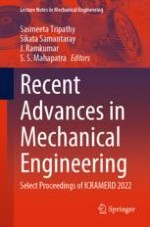This book presents select proceedings of the International Conference on Recent Advances in Mechanical Engineering Research and Development (ICRAMERD 2022) focusing on the recent advances and best practices of mechanical engineering, related technologies and sciences to meet the challenges in mechanical engineering, digital technology and smart manufacturing. The contents focus on design engineering, advanced materials, automation in engineering, industrial and systems engineering, energy and others. Some of the topics discussed here include fracture and failure analysis, fuels and alternative fuels, non-conventional machining, combustion and IC engines, advanced manufacturing technologies, powder metallurgy and rapid prototyping, industrial engineering and automation, supply chain management, design of mechanical systems, vibrations and control engineering, automobile engineering, performance analysis of biomass energy systems, heat transfer, composite materials, thermal modelling and simulations of different systems, analysis of slurry pipeline systems, waste management, optimization and robotics. The wide range of topics presented in this book will be useful for beginners, researchers as well as professionals in mechanical engineering.
